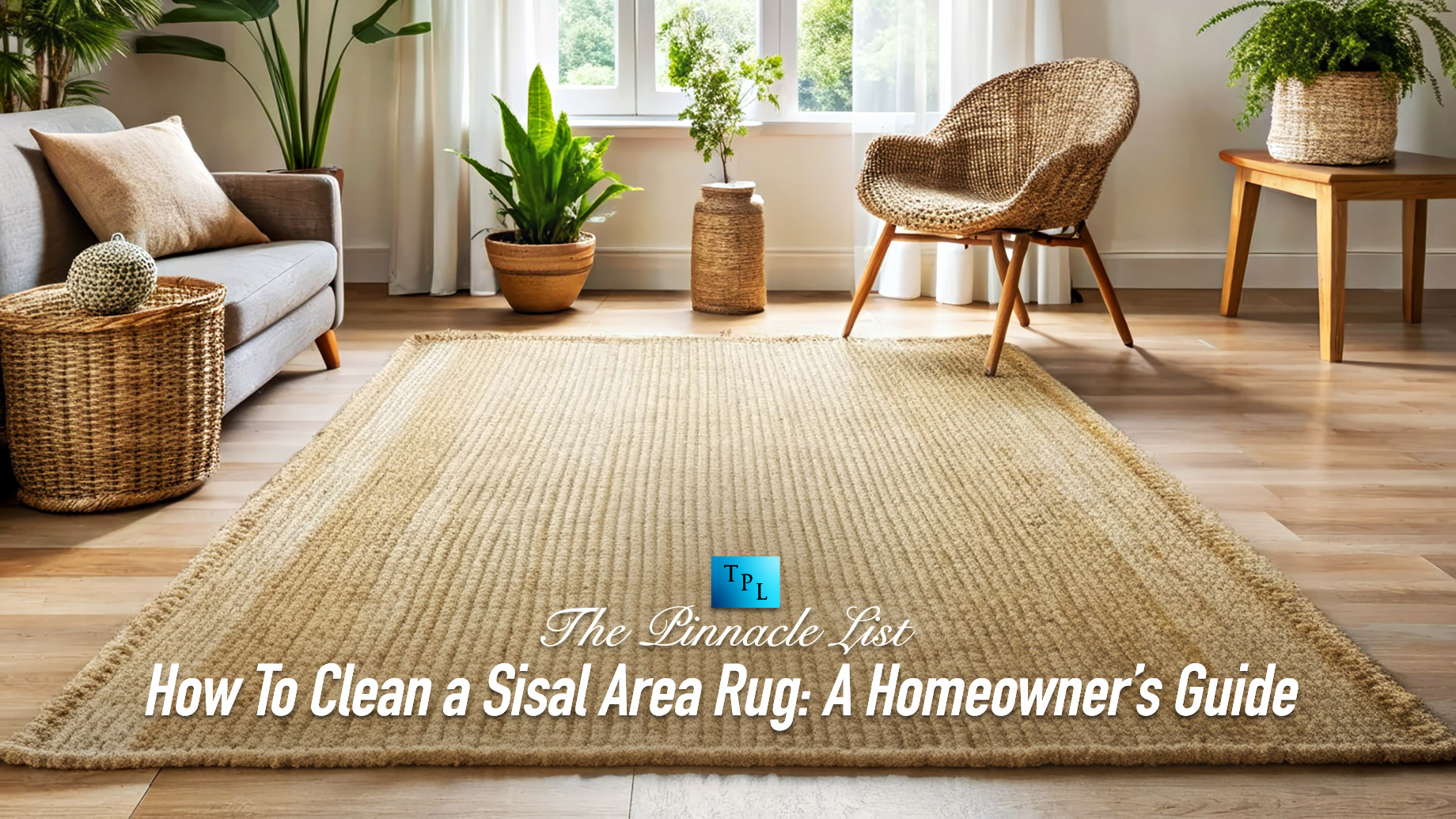
Sisal rugs add a natural, textured element to any space. Their organic fibers bring a warm, earthy feel to your home. However, maintaining a sisal area rug can be challenging due to its delicate nature and sensitivity to moisture. Unlike synthetic carpets, sisal is a natural fiber from the agave plant, making it durable and prone to staining and water damage. This guide will take you through practical steps to clean and care for your sisal area rug, helping you keep it looking fresh and lasting longer.
1. Regular Vacuuming
Vacuuming is the most effective way to keep your sisal rug clean. Since sisal fibers are woven tightly, they tend to trap dirt and debris in the weave. Regular vacuuming prevents particles from settling deep into the fibers, which can cause wear over time.
Use a vacuum with strong suction but without a rotating brush or beater bar, as these can damage the delicate fibers. Vacuum the rug once or twice a week, depending on foot traffic. For areas with heavy use, consider vacuuming every few days. Start by vacuuming against the weave to lift dirt, then go over it again in the direction of the weave for a smooth finish.
2. Spot Cleaning Spills Immediately
Sisal fibers easily absorb liquids, which can result in lasting stains. If a spill occurs, immediately press a clean, dry cloth or paper towel onto the spot—avoid rubbing to prevent the liquid from spreading. Rubbing can cause the liquid to penetrate deeper into the fibers, making the stain harder to remove.
If the spill is from a non-greasy liquid, such as water or juice, continue blotting until the area is as dry as possible. For greasy or oily spills, sprinkle baking soda or cornstarch over the area and let it sit for about 15 minutes to absorb the oil. Then, vacuum the residue away.
3. Deep Cleaning
Deep stains or extensive dirt buildup may require more intensive care. While you can attempt some deeper cleaning methods at home, using excessive water or harsh chemicals can damage sisal. In such cases, seeking professional rug cleaning services is often the best approach. Professional cleaners have specialized equipment and products designed for natural fiber rugs, helping them remove dirt and stains without causing damage.
If you decide to try deep cleaning yourself, use a dry carpet cleaning powder. Sprinkle it over the rug and gently brush it into the fibers with a soft-bristled brush. Let it sit for the recommended time, then vacuum it thoroughly.
4. How To Handle Odors
Sisal rugs can sometimes develop a musty smell, especially if they’ve been exposed to moisture. To handle odors, sprinkle baking soda liberally over the rug and let it sit for several hours or overnight. Baking soda helps to absorb odors naturally without introducing moisture. Once it has done its job, vacuum the rug thoroughly.
If the smell persists, try placing the rug outside in a shaded, well-ventilated area for a day or two. Fresh air can help dissipate any lingering odors.
5. Protecting It From Moisture
One of the biggest challenges with sisal rugs is their sensitivity to moisture. Even small amounts of water can cause the fibers to expand, warp, or develop mold. To protect your rug, avoid placing it in areas where spills are likely, such as under dining tables or in bathrooms.
If you live in a humid climate, consider using a dehumidifier in the room. This helps to reduce moisture levels in the air, minimizing the risk of mold and mildew growth. If your rug does get wet, act quickly to dry it. Blot the wet area with a dry cloth, and then use a fan to speed up the drying process.
6. Using Rug Pads for Extra Protection

A rug pad can provide an additional layer of protection for your sisal rug. Not only does it help keep the rug in place, preventing slips and trips, but it also acts as a barrier between the rug and the floor. This reduces wear and tear on the rug fibers and helps prevent dirt from being ground into the weave.
Choose a rug pad made specifically for natural fiber rugs. Avoid pads with a rubber backing, as these can trap moisture and potentially damage your floor. Instead, opt for a felt or natural latex pad that allows for better air circulation.
7. Preventing Sun Damage
Natural fibers like sisal are prone to fading when exposed to direct sunlight for extended periods. To prevent sun damage, place your rug in an area with filtered light or rotate it every few months. This helps distribute any fading evenly across the rug rather than creating stark, uneven patches.
If your room has large windows, consider using blinds, curtains, or UV-filtering window films to protect your rug from direct sunlight. This simple precaution can significantly extend the lifespan of your sisal rug.
8. Seasonal Maintenance Tips
A little extra care during seasonal changes can go a long way in preserving your sisal rug. During winter, when snow and mud are common, place a mat at the entrance to catch debris before it reaches the rug. In the summer, when humidity levels are higher, keep an eye out for signs of mold or mildew.
For annual maintenance, take your rug outside on a dry, sunny day and give it a good shake to remove any dust or debris trapped in the weave. This is especially helpful for larger rugs that may be difficult to vacuum thoroughly.
Conclusion
Cleaning a sisal area rug may seem daunting at first, but with the right approach, it’s manageable. Regular vacuuming, prompt spill cleanup, and periodic deep cleaning are essential to maintaining the natural beauty of your rug. By taking simple precautions and knowing when to seek professional help, you can keep your sisal rug looking great for years.